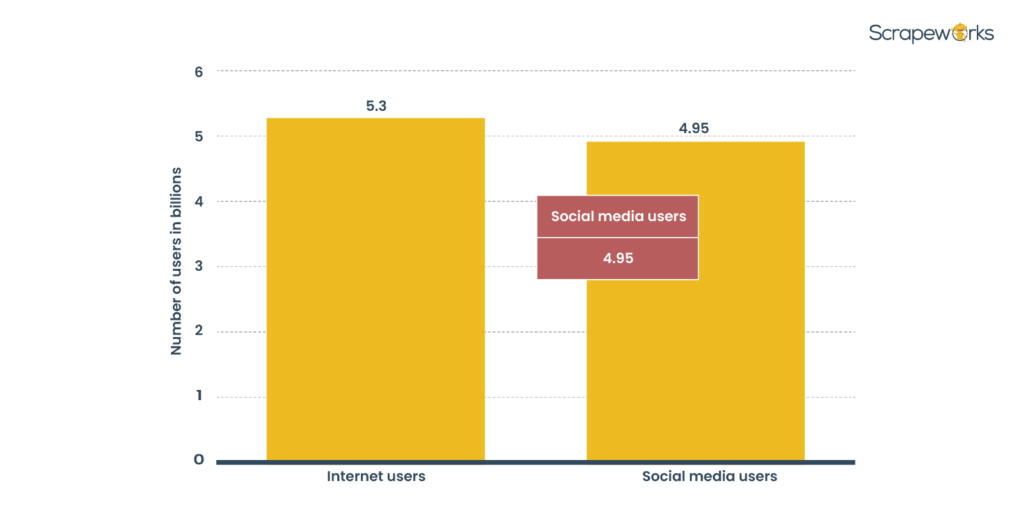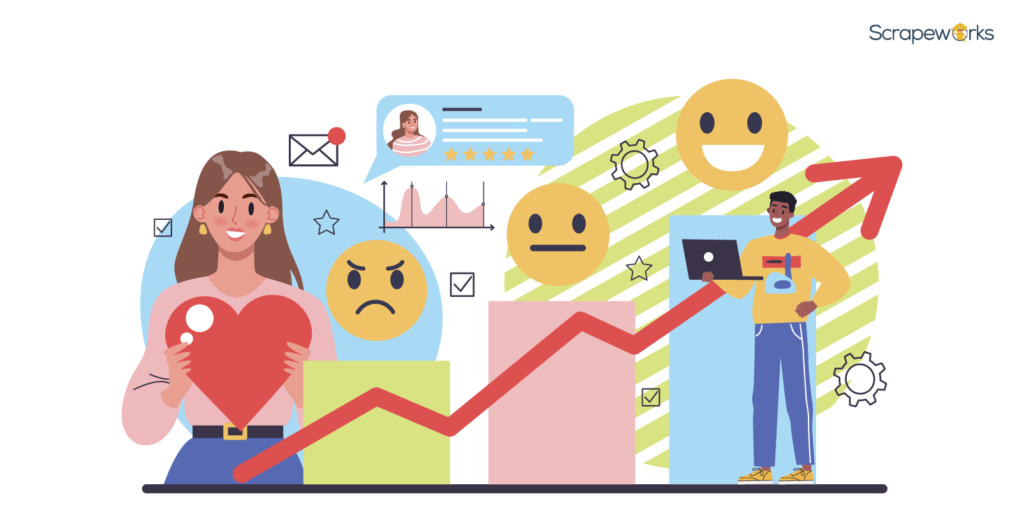Social media has evolved into a vast repository of information, reflecting human opinions, emotions, and daily activities. However, extracting data from social media sites presents unique challenges, as many platforms have stringent anti-scraping techniques to safeguard user privacy. Social media scraping remains crucial for sentiment analysis and diverse research purpose.

According to Statista, in 2023, nearly 4.95 billion individuals worldwide were engaged with social media out of a total of 5.3 billion users. The number is projected to reach almost six billion by 2027. Social media platforms provide valuable data accessible to companies, influencing various aspects of people’s lives, from learning and working to expressing opinions and engaging in activities that were once limited to in-person interactions. In this scenario, leveraging web scraping tools or application programming interfaces (APIs) makes extracting valuable information from multiple social media platforms easier. Let’s explore how companies utilize these social media insights to enhance their business and connect with potential customers.
What is social media scraping?
Social media scraping involves the automated web scraping process executed by bots. While manually searching the web for specific mentions or campaigns can be time-consuming, the use of bots streamlines these tasks, enabling a more efficient data extraction process. Scrapeworks offers an efficient social media scraper, making your search easier.

Many businesses and renowned brands increasingly collaborate with influencers across social media platforms to promote products and services. In 2017, Puma signed Virat Kohli to an eight-year deal worth Rs. 110 crore to endorse their brand. This partnership elevated Puma’s market position in India, showcasing their belief in Kohli’s dedication and talent. Additionally, Kohli launched the One8 range of sneakers in collaboration with Puma, further solidifying their association in the sports industry. These social media scrapers crawl around for information across targeted platforms, collecting public data from influencers’ profiles. This not only aids in understanding influencer demographics but also assists in identifying suitable influencers for effective brand promotion.
Hashtags and campaign analysis
Monitoring engagement metrics can be challenging when businesses use social media branding and promotions. Checking whether a hashtag gains momentum becomes crucial for refining messaging or creative elements. Web scraping bots offer a solution by consistently tracking data, eliminating the need to navigate campaigns blindly, and providing a clear view of the impact on branded and secondary hashtags. For example, if searching for a specific hashtag, a web scraper can retrieve a feed of recent posts using that tag and the associated user data for each post.
Similarly, during a campaign with the hashtag #viral, scraping allows for comparing engagement levels before, during, and after the promotion. Additionally, hashtags enable businesses to capitalize on trends while they are still relevant rather than days or weeks later when they become outdated. Adopting this approach ensures businesses can identify optimization opportunities and plan their strategies effectively.
Customer-centric strategy

Social media scraper can gather reviews from websites and social networks, offering an organic and real-time perspective on products and services. Dynamic data is essential for businesses striving to embrace a customer-centric approach. Social media channels provide a continuous stream of dynamic information about individuals, continually updated as new data emerges. This dynamic data enables businesses to swiftly adjust their strategies, gaining a comprehensive understanding of market trends and consumer preferences. It functions as a valuable tool for decision-making, guiding businesses toward more informed and responsive actions.
Sentiment analysis and challenges
Sentiment analysis is one of the important applications of social media scraping in marketing research. It is important to note that while scraping data that is publicly available is generally legal, some restrictions need to be considered. Refining business strategy through social media scraping involves enhancing audience engagement, discovering trends, targeting local users, gathering inspiration, and improving public relations and communication. This approach offers direct insights into the target audience, enabling businesses to overcome challenges like robust bot protection.

Despite the challenge of overcoming robust bot protection, businesses still find value in social media scraping for lead generation. Businesses can identify potential leads interested in their products or services by analyzing social media activity. This targeted approach enables more effective and personalized marketing efforts.
Conclusion
Extracting insights from social media data through web scraping bots has become integral to marketing and research strategies. Analyzing hashtags and campaigns and adopting customer-centric strategies further emphasize the role of social media scrapers in shaping successful marketing endeavors. Despite challenges such as anti-scraping techniques and bot protection, businesses recognize the value of social media scraping in refining strategies and connecting with their target audience. Scrapeworks helps businesses identify potential leads through social media scraping and generate effective campaigns for brand awareness.






